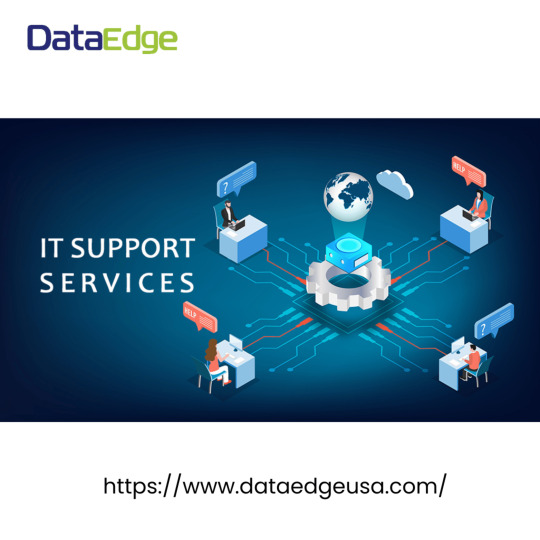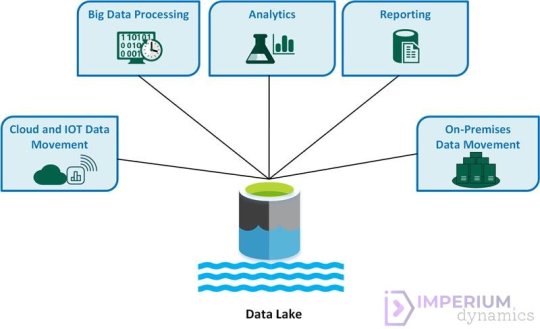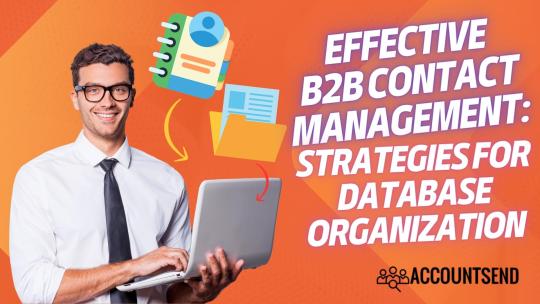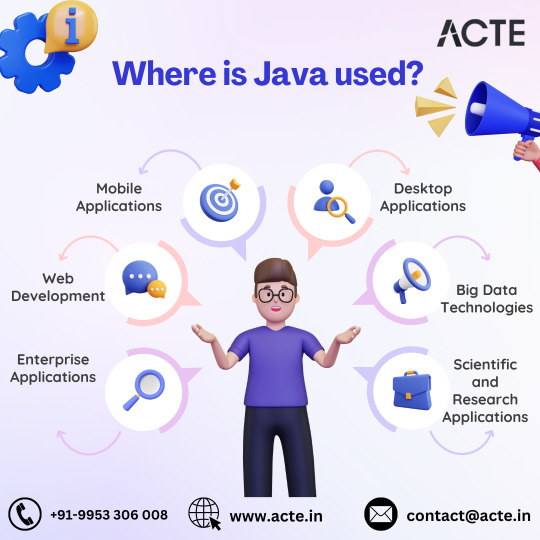#crm database software
Explore tagged Tumblr posts
Text
Why Businesses in London Are Choosing Bespoke CRM

In the competitive business landscape of London, staying ahead means more than just offering great products or services—it requires smart, tailored systems that streamline operations and enhance customer experiences. That’s why an increasing number of companies in London are turning to bespoke CRM London solutions.
Unlike off-the-shelf CRM software, a bespoke CRM is custom-built to match the specific needs of your business. It’s no longer just about managing contacts—it’s about improving relationships, automating workflows, and making smarter business decisions.
What Is a Bespoke CRM?
A bespoke CRM London is a fully customised software system designed around the processes, goals, and workflows of a specific business. It’s built from the ground up to solve your unique challenges—whether you're managing sales leads, customer support, project timelines, or multi-team collaborations.
Top Reasons London Businesses Are Making the Switch
1. Tailored to Fit Business Needs
London businesses vary greatly in size, industry, and structure. A bespoke CRM adapts to your internal processes instead of forcing you to change them. From managing sales funnels to customer retention strategies, everything can be built around what already works for you.
2. Scalable for Growth
Off-the-shelf CRMs may become limiting as your business evolves. Bespoke systems are designed to grow with your business, adding features and integrations as needed—without the hassle of starting over or switching platforms.
3. Better Integration with Existing Tools
London companies often rely on a range of tools—email platforms, invoicing software, marketing tools, and more. A bespoke CRM London can integrate seamlessly with your existing tech stack, creating a unified digital ecosystem.
4. Enhanced Data Control and Security
Data privacy is a major concern, especially for UK businesses subject to GDPR regulations. With a bespoke CRM, you have complete control over how your data is stored, accessed, and protected.
5. Improved Customer Experience
A custom CRM helps your team track every client interaction and history, allowing for personalised service and faster response times. This leads to higher satisfaction, stronger loyalty, and more repeat business.
6. Competitive Advantage
In London’s fast-paced market, efficiency matters. A CRM that works exactly how your team needs it to can significantly boost productivity and give you an edge over competitors still relying on generic systems.
Bespoke CRM: Ideal for London’s Diverse Industries
Whether you're a tech startup in Shoreditch, a law firm in the City, or a creative agency in Soho, a bespoke CRM can be adapted to your industry-specific requirements. Features can include:
Custom sales pipeline stages
Client onboarding tools
Case or ticket tracking
Automated invoicing and follow-ups
Real-time analytics and dashboards
Why Work with a London-Based CRM Developer?
Partnering with a local developer means:
Direct communication and face-to-face collaboration
Faster support and system updates
Deep understanding of your market and compliance needs
Final Thoughts
As more London businesses realise the limitations of one-size-fits-all CRM systems, the demand for bespoke CRM London development is growing. A custom solution can save time, reduce costs, and increase both team and customer satisfaction. Visit more information for your website
0 notes
Text
Why Choosing the Right Real Estate Database Management System (REDMS) is Key to Real Estate Success?

Are you struggling to store and organize client documents, property details, and transaction data? You’re not alone. Nearly 75% of real estate agents face data mismanagement, leading to lost leads and delayed deals. Traditional spreadsheets can’t keep up with today’s fast-paced market. That’s why top real estate database software is crucial. A cloud-based solution centralizes business data, offering agents a clear view of each lead’s journey. This enables seamless communication and quick access to critical information. In this guide, we’ll explore the key features of property management databases, helping you choose an efficient system that gives you a competitive edge in the industry.
What is a Real Estate Database Management System?
A Real Estate Database Management System (REDMS) provides a comprehensive 360° view of a client’s interactions with your business. It gathers data from every touchpoint, client details, transaction history, property management, market data and lead generation into a unified profile. It tracks client inquiries, rental history, inspection notes, and their position in the buyer’s journey. It is designed to help real estate professionals efficiently store, organize, and manage information relevant to real estate transactions and client relationships.
Consistent database upkeep and a keen focus on high-quality leads will keep your database a powerful tool for driving business growth.
Property management databases with advanced features, often integrated into CRMs, provide even greater benefits, including:
Enhanced client relationships with personalized follow-ups and targeted communication.
Increased efficiency through automation and simplified data entry.
Advanced marketing strategies, including lead generation, nurturing campaigns, and pipeline management.
Data-driven insights that support strategic decision-making and accurate market forecasting. With this in mind, we’re going to list down the key features of real estate databases.
Key Features to Look for in a Real Estate Database Management System Choosing the right real estate database management system is important for streamlining operations and improving efficiency. Whether you're choosing between a real estate CRM vs. a database system or evaluating cloud-based real estate database solutions, understanding the key features of property management databases will help you select the top real estate database software for your needs.
1) Database Administration: Efficient database management ensures accurate and up-to-date property listings.
Manual and automatic property data uploading and editing.
Duplicate data detection and merging.
Bulk uploading for seamless data transfer.
Unlimited file and media attachments.
Custom logs triggered by key actions such as new listings, deletions, and portal activities.
2) Analytics: With the help of data-driven insights, real estate professionals can make strategic decisions.
Customer analytics to track buyer behaviour and preferences.
Market trend analysis to identify growth opportunities.
Custom reports and data visualization tools.
AI-powered analysis to predict property value growth, ROI, and customer actions.
3) Database Search and Filtering: A powerful search function enables quick access to relevant listings.
Keyword and key phrase-based queries for easy navigation.
Search segmentation by buyer intent, sale type, and property category.
Customizable filters, including location, price range, listing status, and parking type.
4) Property Portal
A centralized hub enhances the user experience for agents and buyers.
Custom notifications for new listings, price changes, and availability updates.
User-generated reviews and ratings for better decision-making.
Comparative property analysis for informed choices.
Home valuation calculators for commissions, mortgages, and rent vs. own decisions.
3D visualization, virtual tours, and interactive floor plans.
Knowledge base with Q&A, buyer/seller guides, and educational videos.
5) Gamification
Engaging elements boost productivity and foster healthy competition.
Leaderboards to track top-performing real estate agents.
Online team-building games to enhance collaboration.
Referral challenges to encourage buyer and renter participation.
By evaluating these features, you can confidently choose a real estate database that aligns with your business goals. Next, assess your specific needs, compare options, and select a solution that maximizes efficiency and growth.
How to Evaluate and Choose the Best System?
Now that we understand the power of top real estate database software, how do you choose the right system? Here’s what to consider, ensuring it meets your business needs and maximizes efficiency.
Unified Data A top real estate database software should centralize all client data from CRM software, property management systems, and lead generation tools. A unified record enables faster, more informed decision-making.
Smarter Reporting: A good real estate database system should generate reports on client insights, contact behaviour, and sales trends. With AI-powered analytics, predictive insights, and customizable reports, you can make data-driven decisions and forecast market trends effectively.
Simplicity and Usability A real estate database system should not be too complicated. You must opt for a solution that is easy to use and highly accessible for even those agents and partners who are not very tech-savvy. It should not need any manual or training to start using it.
Scalability Choose a cloud-based real estate database solution that grows with your business, handling increasing leads, properties, and transactions without performance issues.
Customization Options You can customize the system according to your businesss needs, from custom fields and reports to workflow automation, ensuring efficiency in daily operations.
Security & Compliance It is important to protect client data. Ensure the system has encryption, role-based access, and compliance with legal regulations like GDPR and CCPA.
Integration Capabilities Seamless integration with marketing, sales, and communication tools enhances productivity and ensures smooth data synchronization.
Customer Support: A good customer support team will be able to resolve issues promptly. Also, this customer support team will update the software regularly, for long-term efficiency and troubleshooting. Common Mistakes to Avoid When Selecting a Real Estate Database System
If you are looking to improve business efficiency and growth for your agency, choosing the right real estate database management system is important. Here are some of the common mistakes to avoid:
Overlooking Integration Needs: If the system doesn’t integrate with your existing tools, you’ll be stuck with isolated data. Ensure seamless compatibility with your CRM, property management software, and lead generation tools to prevent inefficiencies.
Choosing Based on Price Alone: Cost is an important factor when selecting a database system, but opting for a cheaper option may mean missing out on key features of property management databases, such as automation, reporting, and scalability. Look for an option that provides value for money. Neglecting Customer Support & Training: Without strong customer support and onboarding resources, users may struggle with implementation, reducing productivity and efficiency.
Conclusion
Any real estate professional aiming for success in this highly competitive industry must consider switching to a Real Estate Database Management System (REDMS) and stop juggling spreadsheets, sticky notes, and scattered databases. A comprehensive real estate database solution that unifies data, organizes information, and tracks properties to streamline workflows is invaluable. Additionally, top real estate database software provides insightful analytics and detailed reporting, turning raw data into actionable insights.
Before choosing a real estate database software, assess your specific business needs, scalability requirements, and integration capabilities. Investing in the right platform ensures long-term efficiency and business growth.
At HomeLead, we are proud to offer a comprehensive Real Estate Database Management System that encompasses the features and benefits covered in this blog. Discover how HomeLead can streamline your real estate operations. Explore our platform today.
#Real Estate CRM Software#Property CRM Software#Real Estate Database Software#Real Estate Database Management System
0 notes
Text

application development services in usa, salesforce services in usa,software testing services, cloud services in usa, crm consulting services, devops services in usa, staffing and recruiting,database management services
#application development services in usa#salesforce services in usa#software testing services#cloud services in usa#crm consulting services#devops services in usa#staffing and recruiting#database management services
0 notes
Text
7 Benefits Of Using Azure Data Lake ?
Azure Data Lake offers a range of benefits that empower businesses to manage, analyze, and derive insights from large volumes of data. Here are seven key benefits of using Azure Data Lake:

Scalability: Azure Data Lake provides virtually unlimited storage capacity, allowing businesses to store and process massive volumes of structured and unstructured data. With its scalable architecture, Azure Data Lake can accommodate growing data volumes and handle processing demands with ease.
Cost-Effectiveness: Azure Data Lake offers a cost-effective storage solution, enabling businesses to pay only for the storage and processing resources they use. By leveraging features such as pay-as-you-go pricing and storage tiering, businesses can optimize costs and achieve better cost efficiency.
Flexibility: Azure Data Lake supports a wide range of data types, including structured data, semi-structured data, and unstructured data. This flexibility enables businesses to ingest, store, and analyze diverse data sources, including text, images, videos, and IoT data, without the need for data transformation or preprocessing.
Unified Data Platform: Azure Data Lake integrates seamlessly with other Azure services and tools, such as Azure Synapse Analytics, Azure Databricks, and Power BI, creating a unified data platform for end-to-end data analytics and insights. This integration enables businesses to streamline data workflows, improve collaboration, and derive more value from their data assets.
Advanced Analytics: Azure Data Lake provides built-in support for advanced analytics and machine learning, enabling businesses to derive insights and make data-driven decisions. With features such as Azure Data Lake Analytics and Azure Machine Learning, businesses can perform complex data processing, predictive analytics, and AI modeling at scale.
Security and Compliance: Azure Data Lake offers robust security and compliance features to protect sensitive data and ensure regulatory compliance. With features such as encryption, access controls, auditing, and compliance certifications (e.g., GDPR, HIPAA, SOC), businesses can maintain data privacy, integrity, and security across the data lifecycle.
Real-Time Insights: Azure Data Lake supports real-time data processing and analysis, enabling businesses to derive insights and take action on data in near-real-time. By leveraging streaming data processing capabilities with services like Azure Stream Analytics and Azure Event Hubs, businesses can monitor, analyze, and respond to events and trends as they occur.
#marketing#microsoft#machine learning#business#commercial#technology#success#artificial intelligence#crm software#data lake#database#backup#databackup
0 notes
Text

From application development and maintenance support to ERP and CRM services, data analytics, cloud computing, DevOps services, software testing and QA, database management, staffing, and IT recruitment, DataEdge offers IT consulting and staffing services to a broad range of industries across the United States.
#application development services in usa#salesforce services in usa#software testing services#cloud services in usa#crm consulting services#devops services in usa#staffing and recruiting#database management services
0 notes
Text
Creating an Effective Lead Database for Business Growth - StarvikStudio
Introduction

Understanding the Importance of a Lead Database:
A “lead database” is a central location where important information on potential clients who have shown interest in your goods or services is kept. It enables firms to cultivate relationships, identify client preferences, and optimize marketing efforts. Companies can streamline their sales by using the potential of a well-structured lead database.
Step 1: Defining Your Ideal Customer Profile
To create a thorough “lead database”, you must first determine your target consumer profile. Identifying crucial demographic information such as age, gender, location, and hobbies, as well as psychographic elements such as preferences, motives, and pain points, is required. Conduct extensive market research and analyze your current client base to create a complete customer profile that corresponds with your business goals.
Step 2: Implementing Data Capture Mechanisms
Effective data-gathering procedures across your digital channels are required to populate your “lead database”. Consider the following strategies:
2.1 Website Lead Forms

2.2 Landing Pages
Create personalized landing pages with persuasive content that addresses the pain points of your target demographic. On these pages, include lead capture forms to collect visitor information in exchange for valuable resources or offers.
2.3 Content Upgrades
Offer relevant content extras, such as downloadable instructions, checklists, or templates, to increase the value of your content. To access these tools, require users to enter their contact information, thereby building your lead database.
2.4 Social Media Lead Generation

2.5 Webinars and Events
To develop thought leadership and attract potential clients, host webinars or participate in industry events. Collect attendee information via registration forms, allowing you to successfully nurture these prospects.
Step 3: Utilizing Customer Relationship Management (CRM) Software
It is important to invest in dependable Customer Relationship Management (CRM) software in order to successfully manage and utilize the obtained data. A CRM system allows you to organize, segment, and track leads, resulting in personalized communication and more efficient lead nurturing. Depending on your business needs, choose popular CRM platforms such as Salesforce, HubSpot, or Zoho CRM.
Step 4: Implementing Lead Nurturing Strategies
Building a lead database is only the first step; good lead nurturing is essential for converting potential consumers into passionate brand supporters. Here are some lead nurturing strategies:
4.1 Personalized Email Campaigns
Divide your leads into groups depending on their demographics, interests, and behaviors. Create personalized email campaigns that deliver tailored information and appropriate offers based on the needs of each segment. To streamline and optimize these initiatives, use marketing automation solutions within your CRM.
4.2 Educational Content:
Create instructive content, such as blog posts, films, or podcasts, that address your audience’s pain areas and offer helpful insights. Distribute this material to your leads across numerous media, establishing your brand as an industry leader while cultivating relationships.
4.3 Lead Scoring and Segmentation
Implement lead scoring systems in your CRM to prioritize and categorize prospects based on interaction and conversion chances. Concentrate your efforts on high-value leads to ensure effective resource allocation and conversion rates.
4.4 Retargeting and Remarketing
Use remarketing and retargeting methods to re-engage leads who have expressed interest but have not yet converted. Display customized advertising on various platforms, reminding leads about your services and incentivizing them to take the desired action.
Conclusion
Developing a thorough “lead database” is a critical step toward attaining long-term business growth. You may optimize your marketing efforts and convert potential consumers into loyal advocates by defining your ideal customer profile, deploying effective data-gathering mechanisms, utilizing CRM software, and employing lead-nurturing strategies. Maintain a competitive advantage by constantly refining and increasing your lead database, responding to shifting market trends, and providing personalized experiences that resonate with your target audience.
Remember that the success of your lead database is dependent not only on the construction of the database, but also on regular updates, data analysis, and iterative improvements. You may easily outrank competitors and establish your brand as a trusted industry leader by prioritizing the quality and relevancy of your content.
Frequently Asked Questions (FAQ)
Q: Why is creating a lead database important for businesses?
A: Creating a lead database is crucial for businesses because it allows them to identify and engage potential customers. By maintaining a centralized repository of customer information, businesses can personalize their marketing efforts, streamline the sales process, and drive sustainable growth.
Q: How do I define my ideal customer profile?
A: Defining your ideal customer profile involves conducting market research and analyzing your existing customer base. Consider factors such as demographics, interests, behaviors, and pain points to develop a detailed customer persona that aligns with your business objectives.
Q: What are some effective data capture mechanisms for building a lead database?
A: There are several effective data capture mechanisms, including:
Website Lead Forms: Strategically place lead capture forms on your website.
Landing Pages: Design targeted landing pages with lead capture forms.
Content Upgrades: Offer valuable resources in exchange for contact information.
Social Media Lead Generation: Utilize social media platforms and lead generation forms.
Webinars and Events: Collect attendee information through registration forms.
Q: Which Customer Relationship Management (CRM) software should I use?
A: The choice of CRM software depends on your business requirements. Consider popular options such as Salesforce, HubSpot, or Zoho CRM. Assess features like lead management, segmentation, and integration capabilities to make an informed decision.
Q: What strategies can I use to nurture leads effectively?
A: Some effective lead nurturing strategies include:
Personalized Email Campaigns: Segment leads and deliver targeted content and offers.
Educational Content: Provide valuable insights through blog articles, videos, or podcasts.
Lead Scoring and Segmentation: Prioritize leads based on engagement levels.
Remarketing and Retargeting: Re-engage leads through targeted ads.
Personalized Follow-ups: Continuously communicate and provide relevant information.
Q: How can I stay ahead of the competition and outrank other websites?
A: To outrank other websites, focus on delivering high-quality and relevant content. Regularly update and refine your lead database, analyze data to identify trends, and adapt your strategies accordingly. By providing value to your audience and establishing yourself as an industry leader, you can gain a competitive advantage.
Q: How often should I update my lead database?
A: It is recommended to update your lead database regularly. Ensure that the information is accurate and relevant by periodically verifying and cleansing the data. Additionally, as your business evolves and market trends change, update your customer profiles to align with the latest insights.
Q: Are there any tools available to help manage lead databases effectively?
A: Yes, there are various tools available to manage lead databases effectively. Customer Relationship Management (CRM) software, marketing automation platforms, and data analysis tools can streamline your lead management processes, automate workflows, and provide valuable insights for optimizing your strategies.
0 notes
Text
The Make or Break: How Data Determines the Success or Failure of Your Sales Leads

The success or failure of your sales leads can often be attributed to one crucial factor: Data
Data holds the power to unlock valuable insights about your target audience, enabling you to tailor your approach and maximize your chances of success. By leveraging accurate and up-to-date data, you can identify and prioritize the most promising leads, optimizing your resources and boosting your conversion rates.
Armed with this information, sales representatives can personalize their pitch, offering tailored solutions that resonate with potential customers on a deeper level. This level of personalization not only enhances the customer experience but also increases the likelihood of closing deals.
Of course, data is only one part of the equation. You still need to have a good sales process and be able to build relationships with your leads. But data can give you a significant advantage by helping you identify the right leads and track your progress.
Data-Driven Conversion Optimization
Conversion rate optimization is a critical aspect of sales success. Data provides the foundation for identifying and implementing effective conversion strategies. By analyzing historical data, organizations can uncover patterns and trends that shed light on what works and what doesn’t in their sales processes.
Personalized Relationship Building
Data empowers sales teams to personalize their engagement strategies, creating a more personalized and relevant experience for potential customers. By utilizing data, sales professionals can craft targeted messages, tailored offers, and customized follow-ups that resonate with individual leads.
Identifying qualified leads: Data can help you identify leads that are more likely to convert. For example, you can use data to look for leads that have a history of buying from your company or that have expressed interest in your products or services.
Prioritizing leads: Once you’ve identified your qualified leads, you need to prioritize them. Data can help you do this by showing you which leads are most likely to close soon. You can also use data to track the progress of your leads and identify any potential roadblocks.
Tailoring your sales pitch: Data can help you tailor your sales pitch to each individual lead. For example, you can use data to learn about the lead’s company, industry, and pain points. This information can help you create a sales pitch that is more likely to resonate with the lead.
Tracking your progress: Data can help you track your progress throughout the sales cycle. This information can help you identify any potential roadblocks and make sure that you’re on track to close the deal.
In short, In the fiercely competitive sales landscape, data has become the make-or-break factor for success. By harnessing the power of data, organizations can qualify leads more effectively, engage with prospects on a personal level, and optimize conversion rates. However, it is crucial to ensure the accuracy and relevance of the data being utilized.
#salespromotion#sales#crm software#lead management software#database#cpq software#technology trends#saas technology
1 note
·
View note
Text
Integrating Third-Party Tools into Your CRM System: Best Practices
A modern CRM is rarely a standalone tool — it works best when integrated with your business's key platforms like email services, accounting software, marketing tools, and more. But improper integration can lead to data errors, system lags, and security risks.

Here are the best practices developers should follow when integrating third-party tools into CRM systems:
1. Define Clear Integration Objectives
Identify business goals for each integration (e.g., marketing automation, lead capture, billing sync)
Choose tools that align with your CRM’s data model and workflows
Avoid unnecessary integrations that create maintenance overhead
2. Use APIs Wherever Possible
Rely on RESTful or GraphQL APIs for secure, scalable communication
Avoid direct database-level integrations that break during updates
Choose platforms with well-documented and stable APIs
Custom CRM solutions can be built with flexible API gateways
3. Data Mapping and Standardization
Map data fields between systems to prevent mismatches
Use a unified format for customer records, tags, timestamps, and IDs
Normalize values like currencies, time zones, and languages
Maintain a consistent data schema across all tools
4. Authentication and Security
Use OAuth2.0 or token-based authentication for third-party access
Set role-based permissions for which apps access which CRM modules
Monitor access logs for unauthorized activity
Encrypt data during transfer and storage
5. Error Handling and Logging
Create retry logic for API failures and rate limits
Set up alert systems for integration breakdowns
Maintain detailed logs for debugging sync issues
Keep version control of integration scripts and middleware
6. Real-Time vs Batch Syncing
Use real-time sync for critical customer events (e.g., purchases, support tickets)
Use batch syncing for bulk data like marketing lists or invoices
Balance sync frequency to optimize server load
Choose integration frequency based on business impact
7. Scalability and Maintenance
Build integrations as microservices or middleware, not monolithic code
Use message queues (like Kafka or RabbitMQ) for heavy data flow
Design integrations that can evolve with CRM upgrades
Partner with CRM developers for long-term integration strategy
CRM integration experts can future-proof your ecosystem
#CRMIntegration#CRMBestPractices#APIIntegration#CustomCRM#TechStack#ThirdPartyTools#CRMDevelopment#DataSync#SecureIntegration#WorkflowAutomation
2 notes
·
View notes
Text
How-To IT
Topic: Core areas of IT
1. Hardware
• Computers (Desktops, Laptops, Workstations)
• Servers and Data Centers
• Networking Devices (Routers, Switches, Modems)
• Storage Devices (HDDs, SSDs, NAS)
• Peripheral Devices (Printers, Scanners, Monitors)
2. Software
• Operating Systems (Windows, Linux, macOS)
• Application Software (Office Suites, ERP, CRM)
• Development Software (IDEs, Code Libraries, APIs)
• Middleware (Integration Tools)
• Security Software (Antivirus, Firewalls, SIEM)
3. Networking and Telecommunications
• LAN/WAN Infrastructure
• Wireless Networking (Wi-Fi, 5G)
• VPNs (Virtual Private Networks)
• Communication Systems (VoIP, Email Servers)
• Internet Services
4. Data Management
• Databases (SQL, NoSQL)
• Data Warehousing
• Big Data Technologies (Hadoop, Spark)
• Backup and Recovery Systems
• Data Integration Tools
5. Cybersecurity
• Network Security
• Endpoint Protection
• Identity and Access Management (IAM)
• Threat Detection and Incident Response
• Encryption and Data Privacy
6. Software Development
• Front-End Development (UI/UX Design)
• Back-End Development
• DevOps and CI/CD Pipelines
• Mobile App Development
• Cloud-Native Development
7. Cloud Computing
• Infrastructure as a Service (IaaS)
• Platform as a Service (PaaS)
• Software as a Service (SaaS)
• Serverless Computing
• Cloud Storage and Management
8. IT Support and Services
• Help Desk Support
• IT Service Management (ITSM)
• System Administration
• Hardware and Software Troubleshooting
• End-User Training
9. Artificial Intelligence and Machine Learning
• AI Algorithms and Frameworks
• Natural Language Processing (NLP)
• Computer Vision
• Robotics
• Predictive Analytics
10. Business Intelligence and Analytics
• Reporting Tools (Tableau, Power BI)
• Data Visualization
• Business Analytics Platforms
• Predictive Modeling
11. Internet of Things (IoT)
• IoT Devices and Sensors
• IoT Platforms
• Edge Computing
• Smart Systems (Homes, Cities, Vehicles)
12. Enterprise Systems
• Enterprise Resource Planning (ERP)
• Customer Relationship Management (CRM)
• Human Resource Management Systems (HRMS)
• Supply Chain Management Systems
13. IT Governance and Compliance
• ITIL (Information Technology Infrastructure Library)
• COBIT (Control Objectives for Information Technologies)
• ISO/IEC Standards
• Regulatory Compliance (GDPR, HIPAA, SOX)
14. Emerging Technologies
• Blockchain
• Quantum Computing
• Augmented Reality (AR) and Virtual Reality (VR)
• 3D Printing
• Digital Twins
15. IT Project Management
• Agile, Scrum, and Kanban
• Waterfall Methodology
• Resource Allocation
• Risk Management
16. IT Infrastructure
• Data Centers
• Virtualization (VMware, Hyper-V)
• Disaster Recovery Planning
• Load Balancing
17. IT Education and Certifications
• Vendor Certifications (Microsoft, Cisco, AWS)
• Training and Development Programs
• Online Learning Platforms
18. IT Operations and Monitoring
• Performance Monitoring (APM, Network Monitoring)
• IT Asset Management
• Event and Incident Management
19. Software Testing
• Manual Testing: Human testers evaluate software by executing test cases without using automation tools.
• Automated Testing: Use of testing tools (e.g., Selenium, JUnit) to run automated scripts and check software behavior.
• Functional Testing: Validating that the software performs its intended functions.
• Non-Functional Testing: Assessing non-functional aspects such as performance, usability, and security.
• Unit Testing: Testing individual components or units of code for correctness.
• Integration Testing: Ensuring that different modules or systems work together as expected.
• System Testing: Verifying the complete software system’s behavior against requirements.
• Acceptance Testing: Conducting tests to confirm that the software meets business requirements (including UAT - User Acceptance Testing).
• Regression Testing: Ensuring that new changes or features do not negatively affect existing functionalities.
• Performance Testing: Testing software performance under various conditions (load, stress, scalability).
• Security Testing: Identifying vulnerabilities and assessing the software’s ability to protect data.
• Compatibility Testing: Ensuring the software works on different operating systems, browsers, or devices.
• Continuous Testing: Integrating testing into the development lifecycle to provide quick feedback and minimize bugs.
• Test Automation Frameworks: Tools and structures used to automate testing processes (e.g., TestNG, Appium).
19. VoIP (Voice over IP)
VoIP Protocols & Standards
• SIP (Session Initiation Protocol)
• H.323
• RTP (Real-Time Transport Protocol)
• MGCP (Media Gateway Control Protocol)
VoIP Hardware
• IP Phones (Desk Phones, Mobile Clients)
• VoIP Gateways
• Analog Telephone Adapters (ATAs)
• VoIP Servers
• Network Switches/ Routers for VoIP
VoIP Software
• Softphones (e.g., Zoiper, X-Lite)
• PBX (Private Branch Exchange) Systems
• VoIP Management Software
• Call Center Solutions (e.g., Asterisk, 3CX)
VoIP Network Infrastructure
• Quality of Service (QoS) Configuration
• VPNs (Virtual Private Networks) for VoIP
• VoIP Traffic Shaping & Bandwidth Management
• Firewall and Security Configurations for VoIP
• Network Monitoring & Optimization Tools
VoIP Security
• Encryption (SRTP, TLS)
• Authentication and Authorization
• Firewall & Intrusion Detection Systems
• VoIP Fraud DetectionVoIP Providers
• Hosted VoIP Services (e.g., RingCentral, Vonage)
• SIP Trunking Providers
• PBX Hosting & Managed Services
VoIP Quality and Testing
• Call Quality Monitoring
• Latency, Jitter, and Packet Loss Testing
• VoIP Performance Metrics and Reporting Tools
• User Acceptance Testing (UAT) for VoIP Systems
Integration with Other Systems
• CRM Integration (e.g., Salesforce with VoIP)
• Unified Communications (UC) Solutions
• Contact Center Integration
• Email, Chat, and Video Communication Integration
2 notes
·
View notes
Text
#application development services in usa#salesforce services in usa#software testing services#cloud services in usa#crm consulting services#devops services in usa#staffing and recruiting#database management services
0 notes
Text
The Future of Customer Relationship Management: Why Your Business Needs a Cutting-Edge CRM System
Introduction
In today’s fast-paced business environment, the importance of customer relationship management (CRM) cannot be overstated. As companies strive to build lasting relationships with their customers, embracing a cutting-edge CRM system is no longer a luxury; it's a necessity. The future of customer relationship management promises exciting developments and innovative approaches that can elevate businesses to new heights. In this article, we’ll delve deep into why your business needs a top-tier CRM system and how it can transform your approach to managing customer relationships.
The Future of Customer Relationship Management: Why Your Business Needs a Cutting-Edge CRM System
A robust CRM system has evolved from merely being a tool for storing customer data. Today, it serves as an integrated platform that enhances communication, streamlines processes, and ultimately drives sales performance. But what does the future hold for CRM systems?
1. Understanding CRM Systems 1.1 What Is a CRM System?
At its core, a CRM system is software designed to manage interactions with current and potential customers. CRM system It helps businesses streamline processes by gathering customer information across various channels—like email, social media, and phone calls—into one comprehensive database.
1.2 Types of CRM Systems
There are three main types of CRM systems:
Operational CRM: Focuses on automating business processes such as sales automation and marketing automation. Analytical CRM: Analyzes customer data to improve decision-making. Collaborative CRM: Facilitates communication between different departments within an organization. 2. The Evolution of Customer Relationship Management 2.1 Historical Perspective
Understanding the evolution of CRM helps contextualize its current state and future trajectory. Early methods relied heavily on manual processes and paper-based records.
2.2 Technological Advancements
With the advent of the internet and cloud computing, the landscape shifted dramatically in the late 1990s, leading to more sophisticated solutions that enable real-time data analysis.
3. The Importance of a Cutting-Edge CRM System 3.1 Enhancing Customer Experience
Customers today expect personalized experiences tailored to their preferences. A cutting-edge CRM system allows businesses to offer just that by analyzing past interactions and predicting future needs.
3.2 Boosting Sales Efficiency
By automating repetitive tasks like lead scoring and follow-ups, sales teams can focus on closing deals rather than administrative work.
4. Key Features of Modern CRM Systems 4.1 Cloud-Based Solutions
Cloud technology offers flexibility and accessibility, enabling team members to access customer data from anywhere at any time.
4.2 AI Integration
Artificial Intelligence (AI) is revolutionizing how businesses interact with customers by providing insights derived from massive datasets.
5. Data Security in Customer Relationship Management
2 notes
·
View notes
Text
Effective B2B Contact Management: Unveiling Strategies to Harness B2B Database Leads and Elevate Sales Growth

In the ever-evolving landscape of B2B sales and marketing, the art of effective B2B contact management emerges as a critical force shaping success. This comprehensive guide delves into the intricate pathways of nurturing robust relationships, optimizing communication, and propelling substantial business growth. At the heart of this strategic journey lies the meticulously organized B2B contact database – a powerhouse for precision B2B lead generation, strategic sales leads, and amplified business development. This illuminating article embarks on a deep exploration of the core strategies that unveil the true potential of B2B databases, catalyzing a transformation from mere data reservoirs into dynamic engines driving precision and growth.
DOWNLOAD THE INFOGRAPHIC HERE
Defining a Clear Database Structure
Central to unlocking the potential of effective B2B contact management is the establishment of a crystal-clear database structure. This architectural marvel sets the stage for targeted B2B lead generation and strategic sales leads, akin to creating a roadmap for successful business development. Contacts are carefully categorized based on pertinent criteria – industry, company size, job titles, and geographic location. The creation of separate fields for pivotal contact details, encompassing names, email addresses, phone numbers, and company information, facilitates a streamlined approach for accessing crucial data. This structured foundation becomes the epicenter from which personalized B2B sales prospects are cultivated and business development thrives.
Regular Data Cleansing and Updates
Much like tending to a thriving garden, maintaining an accurate B2B contact database involves nurturing and pruning. Through consistent data cleansing practices, redundancies are eradicated, errors are rectified, and outdated information is supplanted. This meticulous process not only sharpens the efficacy of B2B lead generation but fortifies the database's integrity. The adoption of data cleansing tools or the strategic outsourcing of this task ensures the accuracy and dependability of sales leads. A refined database lays the groundwork for triumphant B2B sales endeavors.
Implementing a Centralized Database System
Efficiency and organization take center stage in the modern business ecosystem, and the implementation of a centralized database system or customer relationship management (CRM) software exemplifies this ethos. This unified platform serves as the nucleus for storing contact information, tracking interactions, and orchestrating seamless communication. A judicious selection of a system tailored to organizational requirements, boasting features such as customizable fields, tagging, and segmentation, transforms B2B lead generation and sales leads into actionable insights. This integration amplifies the potency of business development initiatives.
Segmenting Contacts for Targeted Outreach
In the dynamic realm of B2B interactions, precision is paramount. Enter the realm of contact segmentation – the art of categorizing contacts based on specific criteria that enrich B2B lead generation efforts. By grouping contacts according to industry, job roles, interests, or engagement levels, the potency of personalized outreach escalates. Each interaction becomes a personalized symphony, every correspondence speaks directly to the recipient's needs. This strategic approach metamorphoses sales leads into symbiotic partnerships, heralding a new era in business development.
youtube
Integrating the Database with Other Tools
The essence of modern business lies in interconnectedness. The harmonious integration of your B2B contact database with other tools and systems encapsulates this ethos. Picture seamless fusion with email marketing platforms, sales automation tools, and customer support systems – this synergy propels the fluid flow of data, automates repetitive tasks, and nurtures cross-functional collaboration. The integration augments B2B lead generation, amplifies business development, and charts a transformative course for your database's evolution into a hub of productivity.
Implementing Data Security Measures
In a landscape defined by digital interconnectedness, safeguarding data is paramount. Robust data security measures form an impervious barrier around the B2B contact information. Enforcing stringent password policies, limiting access to authorized personnel, and maintaining regular backups fortify defenses against potential breaches. Staying vigilant regarding data privacy regulations is a testament to your commitment to maintaining trust with B2B sales leads and partners.
Providing Training and Documentation
Empowerment extends beyond technology, encompassing adept handling of the contact management system by your team. Comprehensive training ensures flawless data entry, accurate updates, and optimal utilization of database features. In tandem, detailed documentation fosters a culture of effective database management, augmenting the value of B2B lead generation and sales prospects. As proficiency spreads, every interaction becomes an opportunity, every engagement a step towards nurturing enduring partnerships.
In summation, the art of effective B2B contact management strategies stands as the linchpin of impactful B2B lead generation, strategic sales leads, and business development. From structuring your database meticulously to integrating advanced tools such as AccountSend, each component harmonizes in a symphony of success. By embracing these strategies, you orchestrate growth, cultivate relationships, and pave a path toward enduring success in a competitive landscape. Embark on this enlightening journey, revolutionize your B2B endeavors, and witness your contact database morph into an instrumental asset fueling triumphant B2B lead generation, strategic sales prospects, and exponential growth.
#B2BLeadGeneration#B2B#LeadGeneration#B2BSales#SalesLeads#B2BDatabases#BusinessDevelopment#SalesFunnel#AccountSend#SalesProspecting#BusinessOwner#Youtube
17 notes
·
View notes
Text
Unveiling Java's Multifaceted Utility: A Deep Dive into Its Applications
In software development, Java stands out as a versatile and ubiquitous programming language with many applications across diverse industries. From empowering enterprise-grade solutions to driving innovation in mobile app development and big data analytics, Java's flexibility and robustness have solidified its status as a cornerstone of modern technology.

Let's embark on a journey to explore the multifaceted utility of Java and its impact across various domains.
Powering Enterprise Solutions
Java is the backbone for developing robust and scalable enterprise applications, facilitating critical operations such as CRM, ERP, and HRM systems. Its resilience and platform independence make it a preferred choice for organizations seeking to build mission-critical applications capable of seamlessly handling extensive data and transactions.
Shaping the Web Development Landscape
Java is pivotal in web development, enabling dynamic and interactive web applications. With frameworks like Spring and Hibernate, developers can streamline the development process and build feature-rich, scalable web solutions. Java's compatibility with diverse web servers and databases further enhances its appeal in web development.
Driving Innovation in Mobile App Development
As the foundation for Android app development, Java remains a dominant force in the mobile app ecosystem. Supported by Android Studio, developers leverage Java's capabilities to craft high-performance and user-friendly mobile applications for a global audience, contributing to the ever-evolving landscape of mobile technology.
Enabling Robust Desktop Solutions
Java's cross-platform compatibility and extensive library support make it an ideal choice for developing desktop applications. With frameworks like Java Swing and JavaFX, developers can create intuitive graphical user interfaces (GUIs) for desktop software, ranging from simple utilities to complex enterprise-grade solutions.

Revolutionizing Big Data Analytics
In big data analytics, Java is a cornerstone for various frameworks and tools to process and analyze massive datasets. Platforms like Apache Hadoop, Apache Spark, and Apache Flink leverage Java's capabilities to unlock valuable insights from vast amounts of data, empowering organizations to make data-driven decisions.
Fostering Innovation in Scientific Research
Java's versatility extends to scientific computing and research, where it is utilized to develop simulations, modeling tools, and data analysis software. Its performance and extensive library support make it an invaluable asset in bioinformatics, physics, and engineering, driving innovation and advancements in scientific research.
Empowering Embedded Systems
With its lightweight runtime environment, Java Virtual Machine (JVM), Java finds applications in embedded systems development. From IoT devices to industrial automation systems, Java's flexibility and reliability make it a preferred choice for building embedded solutions that require seamless performance across diverse hardware platforms.
In summary, Java's multifaceted utility and robustness make it an indispensable tool in the arsenal of modern software developers. Whether powering enterprise solutions, driving innovation in mobile app development, or revolutionizing big data analytics, Java continues to shape the technological landscape and drive advancements across various industries. As a versatile and enduring programming language, Java remains at the forefront of innovation, paving the way for a future powered by cutting-edge software solutions.
2 notes
·
View notes
Text
What is Membership Management Software
Membership management software is a tool designed to help organizations efficiently handle their membership-related tasks. It streamlines processes involved in managing members, subscriptions, and other aspects of membership-based organizations. Here are key features and functions often associated with membership management software:
Member Database:
Centralized database to store and manage member information.
Profiles with details like contact information, membership history, and preferences.
Registration and Onboarding:
Facilitates easy member sign-up and onboarding processes.
Automates registration workflows and ensures accurate data entry.
Membership Renewals:
Automates renewal reminders and processes.
Tracks and manages membership expiration dates.
Payment Processing:
Handles membership fees, dues, and other financial transactions securely.
Integration with payment gateways for online payments.
Communication Tools:
Enables communication with members through emails, newsletters, or announcements.
Segmentation for targeted messaging to specific member groups.
Event Management:
Organizes and promotes events for members.
Tracks attendance and manages event logistics.
Reporting and Analytics:
Generates reports on membership metrics, engagement, and financial data.
Provides insights for decision-making and strategic planning.
Automation:
Automates routine tasks such as renewals, communication, and data updates.
Improves efficiency and reduces manual workload.
Integration with Other Systems:
Integrates with CRM, marketing tools, or other software for a seamless workflow.
Ensures data consistency across different platforms.
Security and Access Control:
Implements secure access controls to protect member data.
Maintains compliance with data protection regulations.
Membership management software is widely used by associations, clubs, nonprofits, and other organizations with a membership structure to enhance member engagement, streamline administrative tasks, and improve overall organizational efficiency.
#accounting#appointments#donations#emails#events#memberships#messaging#payments#reporting#reservations
2 notes
·
View notes
Text
Nonprofit CRM: A Vital Tool for Donor Management and Fundraising Software
Nonprofit CRM: A Vital Tool for Donor Management and Fundraising Software
In the world of nonprofit organizations, effective donor management and efficient fundraising are essential for long-term sustainability and achieving their missions. To excel in these areas, many nonprofits are turning to the best nonprofit CRM (Customer Relationship Management) systems and fundraising software as indispensable tools.
The Importance of Donor Management
Donors are the lifeblood of nonprofit organizations. Whether they are individuals, corporations, or foundations, maintaining strong relationships with these supporters is critical. Donor management involves not only tracking contributions but also understanding their preferences, interests, and history with the organization. A robust CRM system designed for nonprofits can be a game-changer in this regard.
Key Aspects of Donor Management with CRM:
Data Organization:
CRM software allows nonprofits to organize donor data efficiently. It keeps track of donor contact information, giving history, and communication preferences, ensuring that you can tailor your interactions and appeals to individual donors.
Segmentation:
By categorizing donors based on their giving patterns, engagement level, or other criteria, nonprofits can create targeted fundraising campaigns. This personalized approach can significantly improve donor retention and acquisition.
Communication:
CRM systems enable automated and personalized communication with donors. You can send out thank-you notes, newsletters, event invitations, and fundraising appeals at the right time and through the preferred channel, enhancing donor engagement.
Analysis:
A good nonprofit CRM provides analytics tools that help organizations understand donor behavior, track campaign performance, and make data-driven decisions. This ensures that your fundraising efforts are continually improving.
The Role of Fundraising Software
Fundraising is the financial engine of nonprofits. Effective fundraising campaigns can make the difference between simply surviving and thriving. Fundraising software streamlines the process and maximizes the impact of fundraising efforts. Key Features of Fundraising Software:
Online Giving:
With the rise of online giving, fundraising software enables nonprofits to set up secure and user-friendly donation pages, making it easy for supporters to contribute online.
Event Management:
Many nonprofits host events to raise funds. Fundraising software simplifies event planning, ticketing, and registration, and it can seamlessly integrate with CRM systems to track attendees and donors.
Peer-to-Peer Fundraising:
This feature empowers supporters to create their own fundraising campaigns on behalf of your organization. It expands your reach and leverages the networks of your most dedicated donors. Reporting and Analytics:
Fundraising software provides detailed reports on donation trends, campaign performance, and donor engagement. This information is invaluable for refining strategies.
The Synergy of CRM and Fundraising Software
Integrating a nonprofit CRM with fundraising software creates a powerful synergy. Donor information stored in the CRM can be seamlessly accessed by the fundraising software, ensuring that all interactions with donors are well-informed and personalized. This synergy leads to a more efficient and effective fundraising process.
Choosing the Best Nonprofit CRM and Fundraising Software: Selecting the right software is a critical decision for any nonprofit. Consider factors such as the size of your donor database, your specific needs, and your budget. The best nonprofit CRM and fundraising software for one organization might not be ideal for another. Ensure that the software you choose can be easily integrated, user-friendly, and provides excellent customer support.
In conclusion, nonprofit CRM systems and fundraising software are indispensable tools in the nonprofit sector. They enable efficient donor management, personalized communication, and data-driven fundraising campaigns, all of which contribute to the long-term sustainability and success of nonprofit organizations. By harnessing the power of these technologies, nonprofits can strengthen their relationships with donors, boost fundraising efforts, and make a more significant impact on the causes they champion.
2 notes
·
View notes
